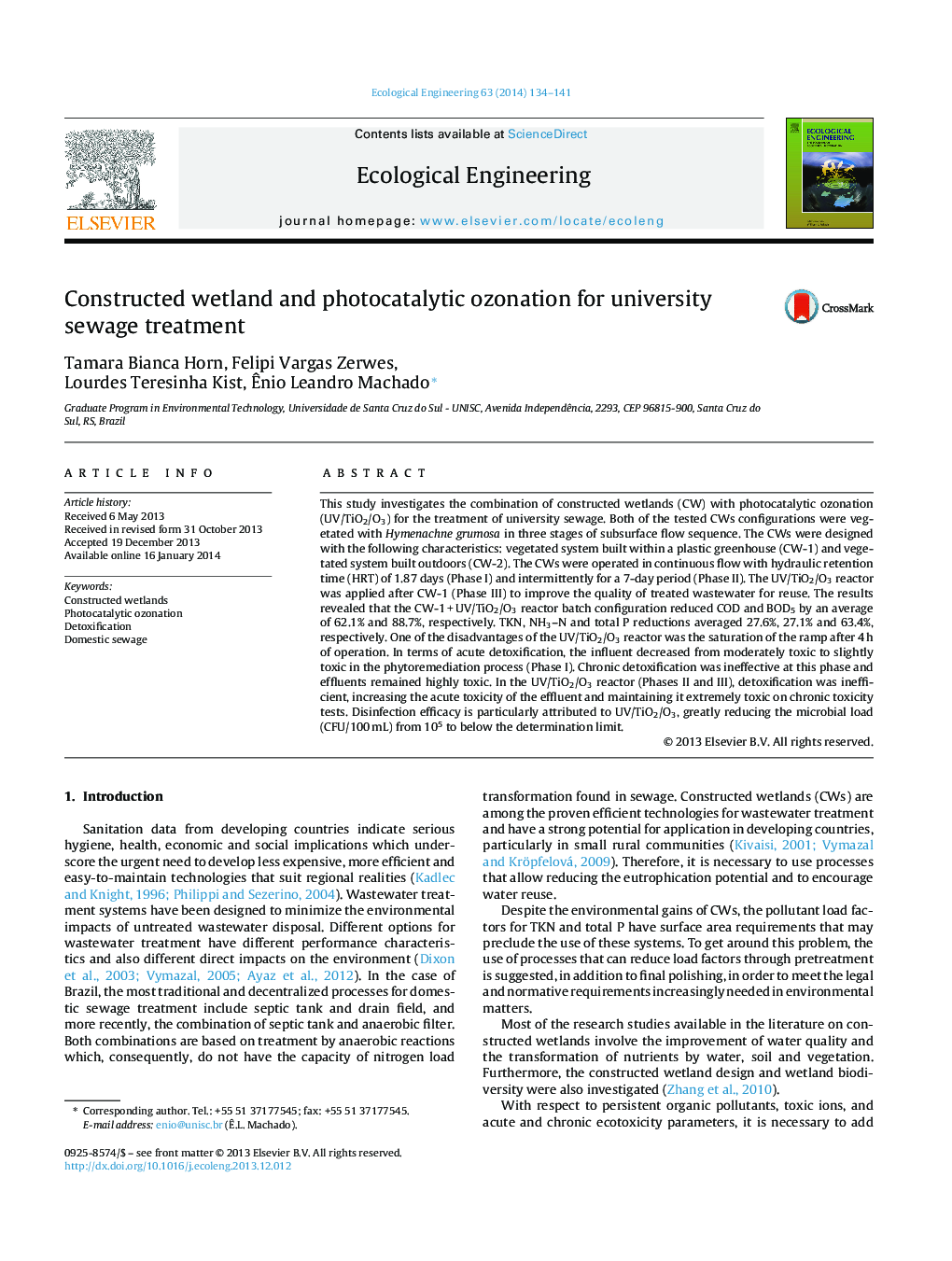| Article ID | Journal | Published Year | Pages | File Type |
|---|---|---|---|---|
| 4389626 | Ecological Engineering | 2014 | 8 Pages |
Abstract
This study investigates the combination of constructed wetlands (CW) with photocatalytic ozonation (UV/TiO2/O3) for the treatment of university sewage. Both of the tested CWs configurations were vegetated with Hymenachne grumosa in three stages of subsurface flow sequence. The CWs were designed with the following characteristics: vegetated system built within a plastic greenhouse (CW-1) and vegetated system built outdoors (CW-2). The CWs were operated in continuous flow with hydraulic retention time (HRT) of 1.87 days (Phase I) and intermittently for a 7-day period (Phase II). The UV/TiO2/O3 reactor was applied after CW-1 (Phase III) to improve the quality of treated wastewater for reuse. The results revealed that the CW-1Â +Â UV/TiO2/O3 reactor batch configuration reduced COD and BOD5 by an average of 62.1% and 88.7%, respectively. TKN, NH3-N and total P reductions averaged 27.6%, 27.1% and 63.4%, respectively. One of the disadvantages of the UV/TiO2/O3 reactor was the saturation of the ramp after 4Â h of operation. In terms of acute detoxification, the influent decreased from moderately toxic to slightly toxic in the phytoremediation process (Phase I). Chronic detoxification was ineffective at this phase and effluents remained highly toxic. In the UV/TiO2/O3 reactor (Phases II and III), detoxification was inefficient, increasing the acute toxicity of the effluent and maintaining it extremely toxic on chronic toxicity tests. Disinfection efficacy is particularly attributed to UV/TiO2/O3, greatly reducing the microbial load (CFU/100Â mL) from 105 to below the determination limit.
Related Topics
Life Sciences
Agricultural and Biological Sciences
Ecology, Evolution, Behavior and Systematics
Authors
Tamara Bianca Horn, Felipi Vargas Zerwes, Lourdes Teresinha Kist, Ãnio Leandro Machado,
